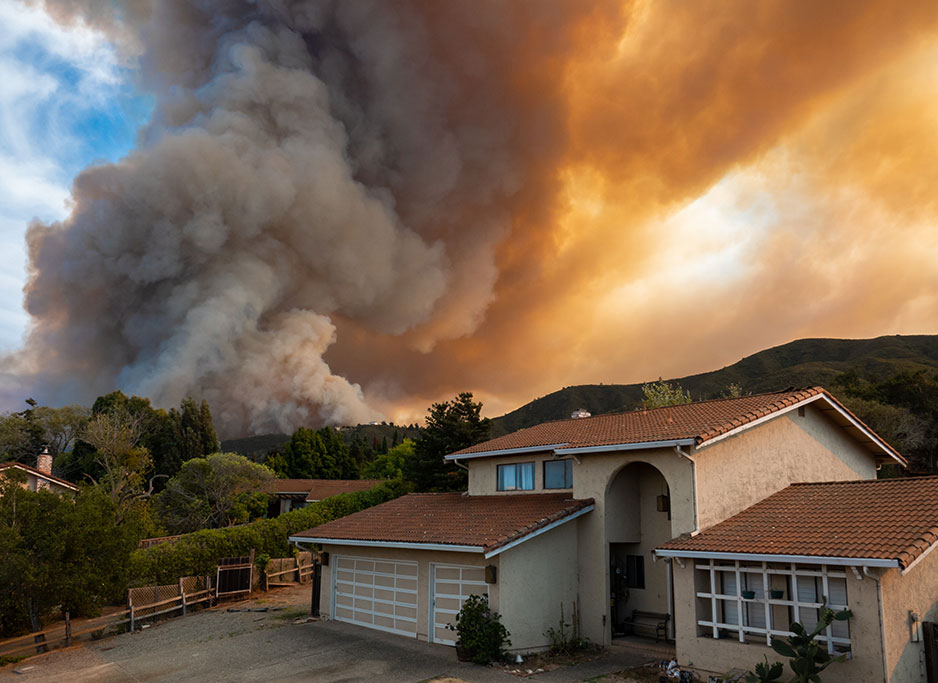
Not only are wildfires damaging to homes, wildlife and health, but they also pose risks to food and cookware. Here are some tips to prevent foodborne illness during an evacuation and after a wildfire. Please note, you may need to evacuate quickly. Don’t take time to pack food unless you know you are at a safe distance from the fire and have time to prepare. If feasible, evacuate before being told to do so.
Evacuating and transporting food
FoodSafety.gov recommends having a cooler and extra ice or frozen bottles of water on hand in case of an emergency. Have enough ice to keep perishable food at 40°F (4°C) or below. Bacteria can multiply rapidly if food is left at room temperature or in the “Danger Zone” between 40°F (4°C) and 140°F (60°C). Never leave perishable food out for more than 2 hours (or 1 hour if exposed to temps above 90°F (32°C). Putting refrigerated foods in the cooler should be the last step before you evacuate the home. Place raw meat and poultry at the bottom of the cooler to avoid cross contamination. If possible, wrap them in plastic. Put an appliance thermometer in the cooler to make sure the temperature stays at 40°F (4°C) or below.
Risk of flames and fumes
Stay informed about the wildfires in your area, and don’t return home until the authorities say it is safe to do so. Discard foods exposed to flames or smoke fumes because they can be contaminated or experience bacterial growth. Chemical fumes can penetrate through packaging (canned goods, jars, plastic, etc.), and foods in refrigerators and freezers can be contaminated since the doors aren’t airtight.
Chemicals used to fight fires can also contaminate foods. Discard any foods exposed to these chemicals. However, you can decontaminate cookware by following these steps:
- Wash contaminated cookware with hot soapy water.
- Submerge items into bleach solution.
- Use 1 tablespoon of unscented, liquid chlorine bleach per gallon of water.
- Let soak for 15 minutes.
Visit Keeping Food Safe During an Emergency to learn more.
Caution – never taste food to determine its safety. When in doubt, throw it out!
Have Questions?
Talk to a food safety expert and get answers to your questions:
- For non-meat food products (cereals, fish, produce, fruit juice, pastas, cheeses, etc.), call the FDA at 1-888-SAFEFOOD (1-888-723-3366).
- For meat, poultry and egg products, call the USDA Meat and Poultry Hotline at 1-888-MPHotline (1-888-674-6854).
- For more questions about food safety or chat live at ask.usda.gov from 10 a.m. to 6 p.m. Eastern Time, Monday through Friday.

